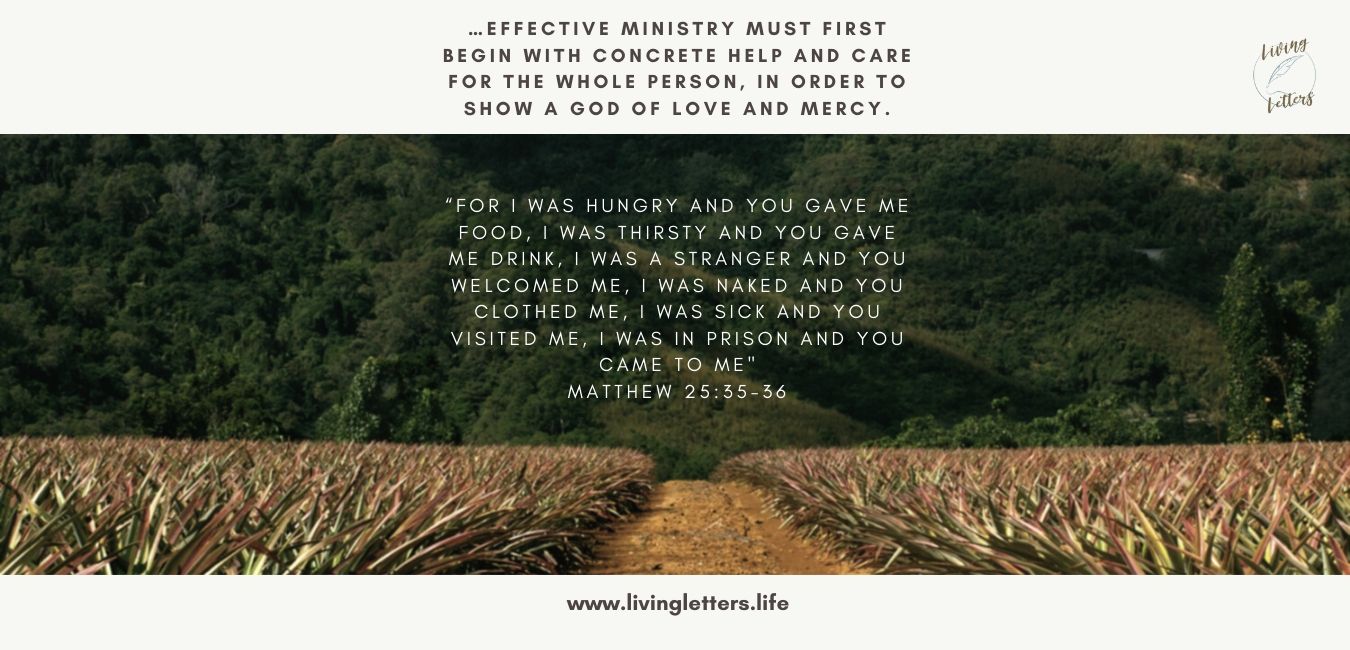
This title may seem a bit odd for an issue but I began to write this blog to discuss people, topics, and organizations that readers might not be familiar with. It was my desire that it would inform, encourage, and call other Christians to action. I hope that Juli's Story—which introduced this month's issue—gave you some idea of the poverty and unrest in the Guatemalan culture, particularly among the indigenous mountain peoples.
It is sometimes easy for Christians in the U.S. to assume that missionaries are reaching all corners of the earth—particularly those in Central America. After all, some form of Christianity has influenced Guatemala since the 16th century when Roman Catholicism was introduced by the Spanish colonists. Protestant missionaries entered the country in the early 1800's. Today, Christianity remains the predominant religion in Guatemala.
“ It is sometimes easy for Christians in the U.S. to assume that missionaries are reaching all corners of the earth ”
While it is certain that the name of Christianity has taken a stronghold in Guatemala, two things are concerning. “Christian” often seems to be what people call themselves even when they seldom or never darken a church door, or have not personally encountered true faith. Second, when the culture is so permeated with evil, no numbers can accurately decipher the condition of hearts. These two factors can certainly be applied here in the U.S. as well as many other places, including Guatemala.
“ No numbers can accurately decipher the condition of hearts. ”
A recent report by the Joshua Project (https://joshuaproject.net/countries/GT) states that of 61 people groups in Guatemala, only one (1.6%) is unreached by Christianity. However, with 95.5% of the 17,523,000 Guatemalan citizens reporting they are Christian, only 24.64% say they are evangelical. This report also gives the evangelical annual growth rate as a slow-paced three point two percent.
“ The poor remain poor amid the vastly smaller but more fortunate and wealthy population. ”
To understand the spiritual need in Guatemala, it is important to understand its history and the impact on the country as a whole. For nearly 40 years, a civil war raged in Guatemala, fought between the government and various leftist rebel groups of the poor—the indigenous peoples and the peasants (Wikipedia). Although the war has been over for 23 years, the poor remain poor amid the vastly smaller but more fortunate and wealthy population. According to the World Bank, 59.3% of the population lives below the poverty line. In addition, 23% live in extreme poverty (https://borgenproject.org/exploring-poverty-rate-in-guatemala/). According to the Borgen Project, 260 Guatemalans own 56% of the national economy.
“ The groups most affected by poverty are the indigenous people. Seventy-nine percent live in poverty and 40% in extreme poverty ”
The groups most affected by poverty are the indigenous people. Seventy-nine percent live in poverty and 40% in extreme poverty (https://www.cia.gov/library/publications/the-world-factbook/geos/got.html). Most of this population lives in rural and mountainous regions, isolated from towns and cities where medicine, food, and other resources are more readily available. These regions have no running water or electricity. Cooking is done on wood stoves inside poorly ventilated shacks, which hold in smoke and often contribute to fatal lung diseases.
“ These regions have no running water or electricity. Cooking is done on wood stoves inside poorly ventilated shacks, which hold in smoke and often contribute to fatal lung diseases. ”
Malnutrition is especially severe (https://www.irteams.org/post/fighting-malnutrition-in-guatemala). Guatemala has the fourth highest rate of chronic malnutrition in the world which translates to the alarming statistic that 50% of children under five are stunted. The effects of this continue throughout life resulting in inferior physical and mental childhood development, lower school performance, and therefore lower income as an adult. Malnourished women also are more likely to birth babies with a lower birth-weight. So the cycle continues.
“ Guatemala has the fourth highest rate of chronic malnutrition in the world which translates to the alarming statistic that 50% of children under five are stunted. ”
The indigenous peoples try hard to remain distinct from the rest of the population, rejecting assimilation into the modern culture of towns and cities. Women continue to wear tribal dress, encouraged by the men to do so. Because their land was stolen from them by the Spanish colonists, they distrust those who are educated and may go so far as to refuse to send their children to school. This raises barriers with foreign missionaries which must be broken down before ministry can begin.
“ Guatemala is also a dangerous place… An average of 101 murders per week were reported in 2018. ”
Guatemala is also a dangerous place. Violence and extortion by powerful criminal organizations are serious problems (https://www.hrw.org/world-report/2019/country-chapters/guatemala). An average of 101 murders per week were reported in 2018 (Wikipedia). Gang-related violence is epidemic. According to an article “Gangs in Guatemala” by Emily Ciatto, in which she cites Business Insider, in 2018 Guatemala was listed as the 16th most violent country in the world (https://blog.uvm.edu/sosten-centralamerica2019/04/02/gangs-in-guatemala/). The article goes on to say that this is “significantly due to the extremely high level of gang violence that terrorizes the country.”
Members of two street gangs, Mara Salvatrucha and Barrio 18 comprise 95% of total gang members with many smaller gangs making up the remaining five percent. Both of the two large gangs originated in Los Angeles, U.S. and moved into Guatemala after the civil war ended. After the removal of public education, the gangs were able to attract young boys by offering them the promise of a better life and providing them with weapons. The gangs are made up of mostly 15-24 year-olds and they participate in robbery, drug dealing, kidnapping, and human trafficking.
“ Very little is being done to end this gang reign of terror. ”
Very little is being done to end this gang reign of terror. The gangs have a “stronghold” on businesses, communities, transportation systems, and law enforcement, due to extortion. If one cannot pay the extortionists, he risks violence and even death. Even law enforcement has been corrupted by accepting bribes from gangs so that whole towns and communities are in danger. When action is taken, only about three percent of crimes are prosecuted (CNN).
“ It is easy to see that Christian ministry in Guatemala has to overcome many challenges. ”
Guatemala 2019 Crime & Safety Report states that there were “at least 28 extortion homicides and 20 assaults involving injuries against operators of public transportation services (e.g. bus drivers, microbus drivers, taxi drivers) in calendar year 2018.” The report goes on to say that the “gangs also target schoolchildren, street vendors, and private citizens. Although in recent years the number of reported extortions increased, most incidents are still unreported. Gang members usually punish non-compliant victims with violent assault or murder, and their family members are also victimized as punishment.”
“ Effective ministry must first begin with concrete help and care for the whole person, in order to show a God of love and mercy. ”
It is easy to see that Christian ministry in Guatemala has to overcome many challenges. Most missions have been established in cities and larger towns rather than among the indigenous peoples in the rural and mountainous regions. As Juli's Story (Nov. 1 blog) shares the reality of both the poverty and the impact of gang violence, it is interesting that God provided the means so that Arlene and Tom Richmond could first reach out to Juli with medical help in her pregnancy and practical items to meet her physical needs. It wasn't until they had proved themselves caring and trustworthy that Juli could consider the Christ they represented. Just taking on the job of providing needed resources is monumental, but effective ministry must first begin with concrete help and care for the whole person, in order to show a God of love and mercy.
“For I was hungry and you gave me food, I was thirsty and you gave me drink, I was a stranger and you welcomed me, I was naked and you clothed me, I was sick and you visited me, I was in prison and you came to me” (Matthew 25:35-36).
“ Pray that the Guatemalan Church would continue to increase in number and that God would open the hearts of those of us here to help our brothers and sisters there. ”
Pray for the missions and missionaries serving God in Guatemala. Pray for the people of Guatemala that they might seek Him. Pray for the Christians there, like Juli, that their faith would be strengthened and that they would experience the peace of God daily. Pray that the Guatemalan Church would continue to increase in number and that God would open the hearts of those of us here to help our brothers and sisters there.
More about “Life of Promise Ministries,” with Tom and Arlene Richmond in my next blog on November 20. Read about all they are doing to bring Jesus to women and children in Zacapa Department, Guatemala.


Send Me A Message